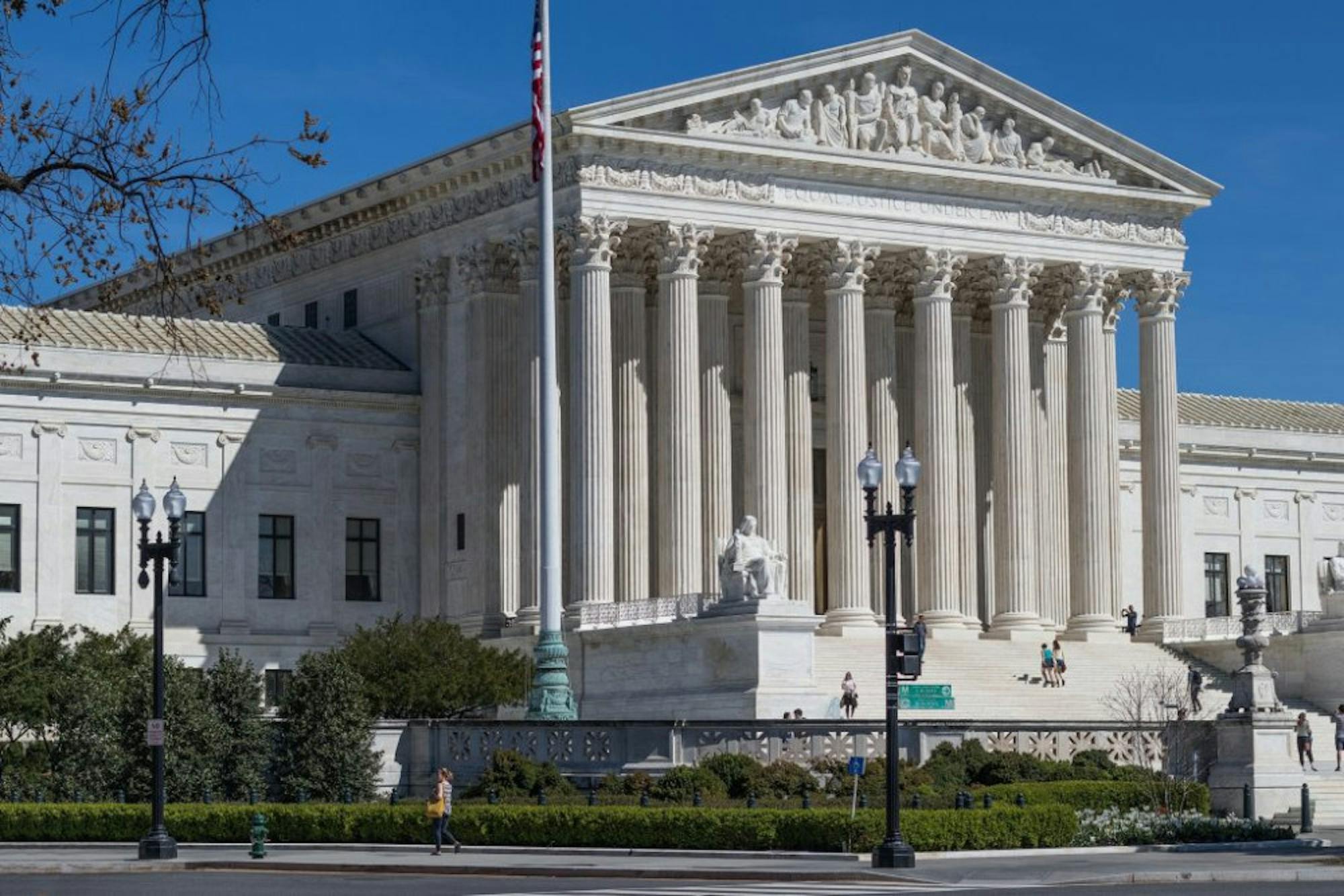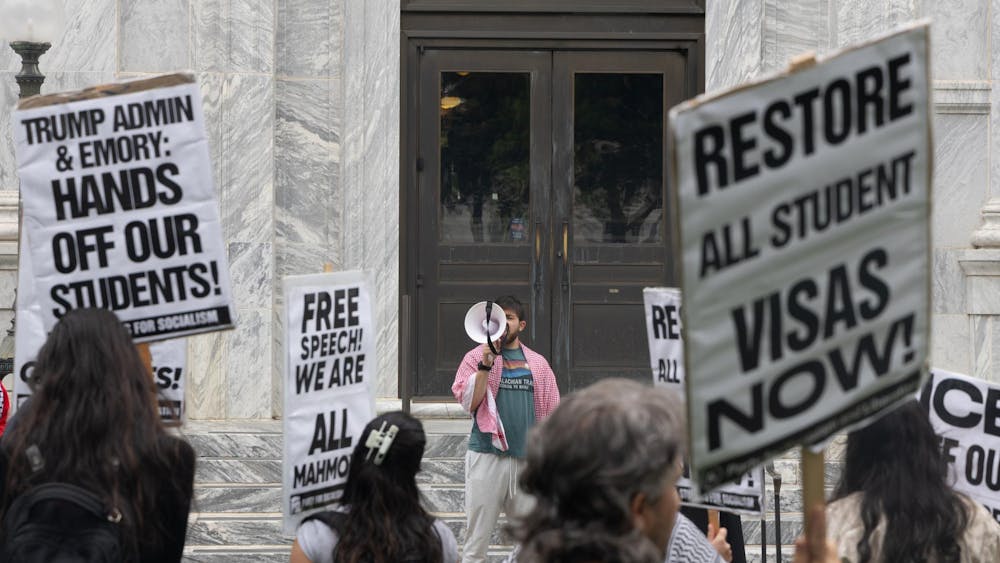
Michael Wang, a Chinese-American lawyer, has become the face of a movement centered around Asian Americans against Harvard University (Ma.), after being rejected from the notorious Ivy League institution himself. A recent graduate of law school, he states to have been inspired by his own college application process to fight what he deems racism against Asian Americans through affirmative action. Having been rejected from Yale, Princeton and Harvard, Wang believes that his credentials were undermined because of his race.
However, what Wang does not advertise is that he got into the University of Pennsylvania and attended Williams College (Ma.), the latter being the top ranked liberal arts college in the country. Moreover, Wang’s fight presents a convoluted agenda, having been largely spearheaded by white, conservative lawyer Edward Blume, who has additionaly been outspokenly against discrimination against white applicants in admission processes. Wang’s academic background begs a question concerning whether the inherent contention within the fight of Asian Americans against Harvard is racism in its admission process or rather the pervasive model minority myth within higher education.
On Oct. 31, The Supreme Court began to preside over a case that could reconfigure the college application process for all marginalized groups. The Students for Fair Admissions (SFFA) sued Harvard University on Nov. 17, 2014 under a violation of the Title VI of the Civil Rights Act of 1964. If the Supreme Court overturns SFFA v. Harvard, it will effectively ban affirmative action in college admissions. Universities will have to grapple with how to best analyze students’ applications without taking account of their race or ethnicity and the impact it has had on students’ lives. SFFA argues Harvard’s supposed race-balancing quota is unjustifiably discriminatory against Asian Americans, and seeks to remove the 40-year precedent that allows colleges to consider the race of their applicants during the admission process.
If the court rules in favor of SFFA, it would be to the detriment of all minority groups. The University of Michigan conducted a race-neutral admissions since 2006, determining that it was impossible to create an adequate diverse student body without race-conscious policies. From 2006 to 2022, they noted the percentage of Black students enrolled in undergraduate institutions decreased from 7% to 4% in that time frame . The percentage of Native American students also dropped from 1% to 0.11%. Considering the difficulties that these minority groups face in college admission processes, Asian Americans are generally overrepresented in U.S. colleges. At Emory University, for example, despite that 6.2% of the U.S. population is Asian, the student body is composed of 17% Asian individuals as of last spring. Considering this, the claim that racism is present against Asian Americans within the American higher education system becomes muddled because Asian Americans are represented on college campuses at a much higher rate than any other minority group.
Affirmative action policies, originally designed to provide extra evaluation for individuals from historically marginalized groups in college admissions, have now become a source of contention. Particularly over the past decade, conservative lawyers have tried to paint the positive effects of affirmative actions as harming white applicants, and some have even succeeded in banning affirmative action in public American universities. After the passage of California’s Proposition 209 — which banned affirmative action in both education and employment — the number of African American students admitted to UCLA and University of California Berkeley (Calif.) decreased by around 55%. This plummet happened in spite of the increasing number of Black students applying to these schools since 1995. Advocates of race-blind policy often succumb to a privileged reality where all applicants have access to the same opportunities and resources, allowing merit to be the decisive factor in college admissions. Such depictions forgo the inequitable reality that accompanies terminating race-conscious policies; universities like Harvard have to consider race in a manner that does not necessarily conflate with the highest test score in order to promote equity. A list of extracurriculars and grade point averages do not take into account present socioeconomic burdens and the U.S.'s inequitable, racialized history. Unique experiences and setbacks provide a key array of diverse experiences, which serves just as fruitful to college campuses as intellectual merit.
Asian Americans undoubtedly suffer from the model minority myth. The term “model minority” was first coined for Japanese American families for their success in the 1960s in assimilating into white society after being released from internment camps. The stereotype follows that each Asian American individual will be naturally intelligent, hard-working and obedient; this image was only bolstered by immigration acts in the 1970s prioritizing the migration of Asians who had certain professional skills. The myth is also perpetuated in admissions; documents revealing that Harvard’s admissions officers consistently scored Asian American applicants lower than other students on subjective traits like positive personality, likability, courage, kindness and being widely respected. Alternatively, the model minority myth harms Asian American students who experience the social conditioning of viewing academic achievement as paramount. Harvard has become the target in the past decade for employing racism against Asian American applicants because the model minority myth makes Harvard out to be the pinnacle of success.
Black and Latinx students typically suffer from being perceived as less smart and capable than their Asian and white counterparts, while also being more likely to be perceived as violent or dangerous. There is a wedge placed pervasively between Asian Americans and other minority groups — because of Asian Americans’ proximity to whiteness, they experience a degree of privilege in educational settings that other minority groups do not. Statistically, first-generation and second-generation Asian students have a more difficult time supporting affirmative action policies that benefit Black Americans. Sociological research shows that these Asian students, being from immigrant households, are more likely to accept racist assumptions of Black students as an indoctrinated mechanism to preserve their standing in America’s racial hierarchy. Understandably, other minority groups view the model minority stereotype pushed on to Asian Americans as a privilege in admissions. Despite the harmful assumptions that the model minority myth projects on to Asian students, it is more palatable to be viewed as intrinsically intelligent as opposed to being dangerous.
Affirmative action, in theory, supplies equity to those who have been historically denied educational opportunities; in order to uphold it, it needs to be reverted to its theoretical origins. We propose a system that does not detract on the basis of race and ethnicity but rather adds to an applicant’s application. Affirmative action needs to be reformed by the admissions offices of specifically elite, private universities, so Asian American students neither benefit nor suffer from its institution. In doing so, this restructure mitigates the harmful effects of the model minority stereotype while acknowledging that it has enabled a higher representation of Asian Americans compared to any other minority group in college populations.
It is difficult to accurately consider the nuances of the fight amongst SFFA and Harvard University because it is difficult to consider the nuances of the Asian American identity and how it has been crafted historically. By implicating Asian Americans as the model minority, the racial hierarchy in America programs Asian American students to ignore the obstacles faced by other minority students. The goal isn’t getting into Harvard — it’s deprogramming the model minority myth.
The above editorial represents the majority opinion of the Wheel’s Editorial Board. The Editorial Board is composed of Isabelle Bellott-McGrath, Rachel Broun, Evelyn Cho, Ellie Fivas, Marc Goedemans, Aayam Kc, Elyn Lee, Saanvi Nayar, Shruti Nemala, Nushrat Nur, Sara Perez, Ben Thomas and Kayla Robinson.





